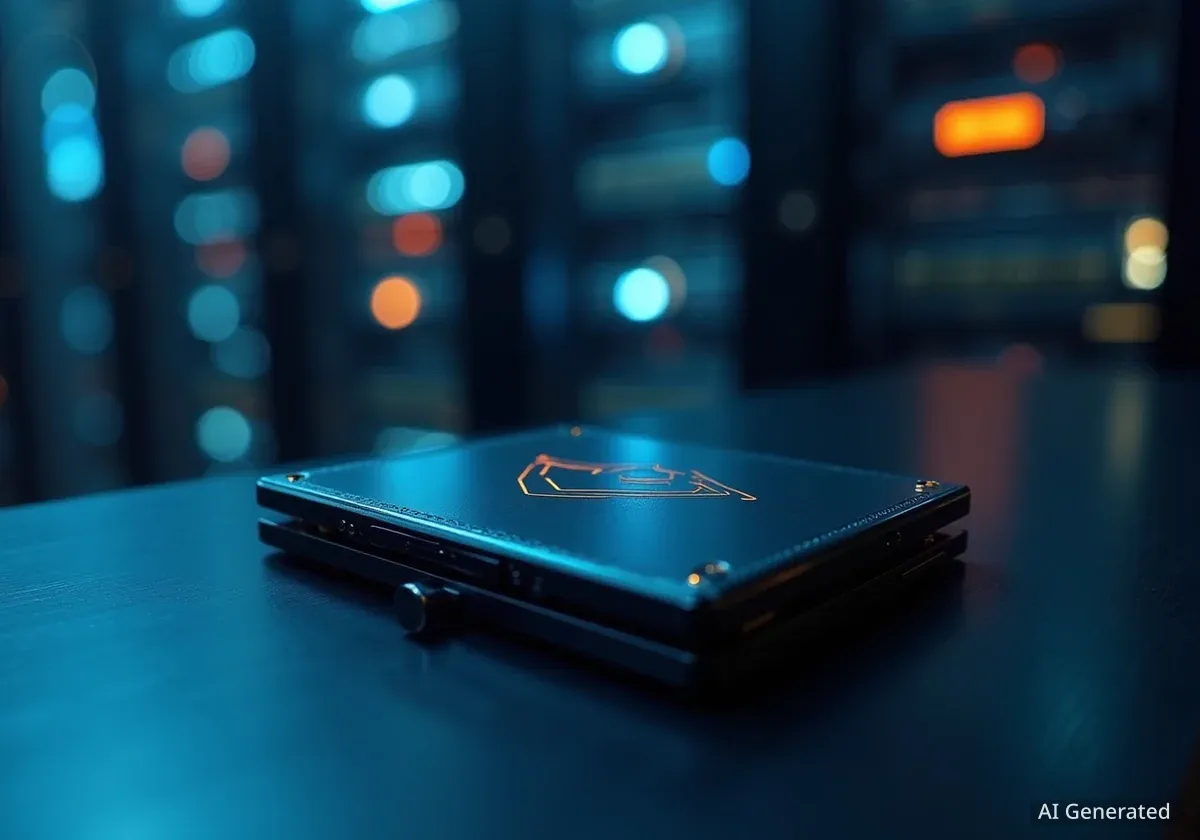Trezor has announced its latest hardware wallet, the Safe 7, which the company is marketing as “quantum-ready.” The new device, scheduled to begin shipping on November 23, 2025, is designed to prepare for future cryptographic standards, though it does not change how current blockchain transactions are secured.
The release comes as the digital asset industry faces a significant rise in security threats, with theft from user wallets increasing. The Safe 7 introduces new hardware features aimed at enhancing transparency and resilience against sophisticated attacks.
Key Takeaways
- Trezor is launching the Safe 7, a new hardware wallet it calls “quantum-ready,” with shipments starting November 23, 2025.
- The term “quantum-ready” refers to the device's ability to accept future firmware updates using post-quantum cryptography, not to immediate changes in on-chain transaction security.
- The wallet features a new auditable secure chip, TROPIC01, allowing for external inspection of its security processes.
- It includes optional Bluetooth connectivity, which can be disabled for users who prefer a USB-only connection.
- The launch is set against a backdrop of rising crypto theft, which reached $2.17 billion by mid-2025.
Understanding the 'Quantum-Ready' Label
The central feature of the Trezor Safe 7 is its preparation for a future where quantum computers could potentially break current encryption standards. However, this capability is forward-looking and does not alter the security of Bitcoin or Ethereum transactions today.
Currently, major blockchains like Bitcoin and Ethereum rely on established cryptographic methods such as ECDSA and Schnorr signatures. A transition to post-quantum security would require a network-wide upgrade, a complex process involving broad consensus and coordination.
The Safe 7 is engineered to smoothly handle this transition when it occurs. Its design ensures it can securely verify and install firmware updates that incorporate post-quantum algorithms. This means users will not need to replace their hardware when networks eventually adopt new cryptographic standards.
The Broader Push for Post-Quantum Security
The move toward quantum-resistant technology is not limited to the crypto industry. In 2024, the U.S. National Institute of Standards and Technology (NIST) finalized its first set of post-quantum cryptographic standards. Major tech companies are also taking action; Apple, for instance, has already implemented a post-quantum encryption protocol for its iMessage service. This global trend highlights the recognized need to prepare for future security challenges.
Innovations in Hardware and Transparency
A significant advancement in the Safe 7 is its internal hardware. Trezor has introduced TROPIC01, a secure chip developed to be auditable by external security researchers. This marks a shift away from traditional “black box” components, where internal workings are opaque.
By allowing independent inspection, Trezor aims to build greater trust in how the device manages sensitive information like PINs and recovery seeds.
The Safe 7 employs a dual-chip architecture, pairing the TROPIC01 with a second, certified secure element. This layered approach is designed to improve tamper resistance and reduce the risk of a single point of failure. This focus on endpoint security is critical in an environment where attacks are increasingly targeting user devices rather than just network protocols.
Rising Security Concerns Fuel Innovation
The emphasis on enhanced hardware security is timely. According to data from Chainalysis, crypto-related theft had already reached $2.17 billion by the middle of 2025, surpassing the total for all of 2024. A growing portion of these losses comes from compromises affecting individual users' wallets and private keys.
Connectivity and User Control
The Trezor Safe 7 introduces Bluetooth connectivity, allowing for easier use with mobile phones. To secure this wireless connection, the device uses the Trezor Host Protocol, an open specification that provides encryption and authentication for all communications between the wallet and a connected device.
Recognizing that some users have strict security policies that forbid wireless interfaces, Trezor has made Bluetooth optional. The device can be operated in a USB-only mode, giving users direct control over their connectivity preferences. This flexibility allows the Safe 7 to be used in a variety of security environments, from casual mobile use to highly restricted, air-gapped setups.
Is it Time for an Upgrade?
The introduction of the Safe 7 presents a choice for current hardware wallet owners. The decision to upgrade depends largely on individual priorities and threat assessment.
For users who prioritize future-proofing their security and value the transparency of an auditable chip, the Safe 7 offers a compelling reason to upgrade now. It provides assurance that the hardware will be ready for the next generation of cryptographic standards without needing replacement.
However, for those satisfied with their current security setup, waiting may be a reasonable option. The primary benefit of the Safe 7 today is its upgrade agility rather than an immediate change to on-chain security. Since networks have not yet announced timelines for post-quantum transitions, existing wallets remain secure for today's environment.
Ultimately, the Trezor Safe 7 represents a proactive step in the evolution of digital asset security. It addresses not only the threats of today but also prepares users for the challenges of tomorrow.





